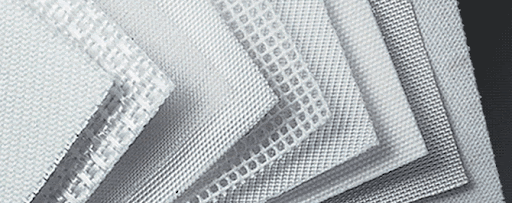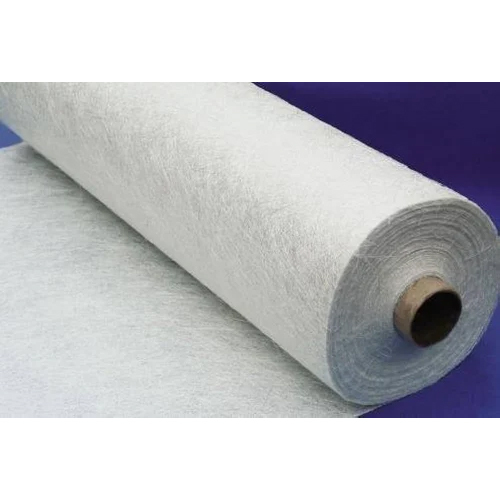Filtration plays a critical role in industries such as water treatment, chemical processing, healthcare, and food production. Two primary types of filter fabrics—non-woven and woven—are widely used for various filtration applications. This article provides an in-depth comparison of these fabrics, discussing their structures, performance, applications, and advantages to help industries make informed choices.
Table of Contents
ToggleUnderstanding Filter Fabrics
Infiltration systems, filter textiles are textile materials intended to remove particulates from liquids or gasses. Their performance and design vary, which makes them appropriate for various uses.
The two main types, non-woven and woven fabrics, are distinguished by their manufacturing processes and structural characteristics.
Non-Woven Filter Fabrics
Instead of weaving or knitting, non-woven fabrics are created by joining fibers together with chemical, mechanical, or thermal techniques. These fabrics are structured randomly, providing excellent filtration efficiency.
Key Characteristics
- Random Fiber Orientation: Fibers are arranged in various directions, creating a web-like structure.
- Porosity: Effective filtration is made possible by high porosity.
- Customizable Thickness: provided in a variety of thicknesses to meet specific requirements.
Advantages
- High dirt-holding capacity.
- Cost-effective for disposable filters.
- Customizable for different filtration levels.
Applications
- Medical masks and gowns.
- Automotive air and oil filters.
- Water and wastewater treatment systems.

Woven Filter Fabrics
Yarns are interlaced in an organized manner to create a grid-like structure in woven fabrics. This regular structure offers precise filtration.
Key Characteristics
- Structured Design: Consistent pore sizes for precise filtration.
- Durability: robust and durable substance appropriate for demanding uses.
- Smooth Surface: Reduces clogging and facilitates cleaning.
Advantages
- High tensile strength.
- Reusable and long-lasting.
- Suitable for demanding filtration systems.
Applications
- Industrial filtration (e.g., mining, chemical processing).
- Conveyor belts in filtration systems.
- High-pressure liquid filtration.
Comparison of Non-Woven and Woven Filter Fabrics
The following table highlights the key differences between non-woven and woven filter fabrics:
| Aspect | Non-Woven Filter Fabrics | Woven Filter Fabrics |
| Manufacturing Process | Bonded fibers through chemical, thermal, or mechanical methods | Interlaced yarns in structured patterns |
| Fiber Orientation | Random | Regular grid |
| Filtration Efficiency | High, especially for fine particles | Moderate to high, depending on pore size |
| Durability | Suitable for short-term use | Long-lasting and reusable |
| Cost | Lower, especially for disposable options | Higher initial cost but cost-effective long-term |
| Applications | Medical, automotive, water treatment | Industrial filtration, high-pressure systems |
| Resistance to Damage | Moderate | High |
| Customization | Highly customizable in thickness and porosity | Limited customization due to weaving structure |
Performance Comparison
Filtration Efficiency
- Non-woven fabrics excel in capturing fine particles due to their high porosity and random fiber orientation.
- Woven fabrics are better suited for applications requiring precise particle separation and a defined pore size.
Strength and Durability
- Woven fabrics are more durable and resistant to tearing, making them ideal for demanding applications like mining and chemical filtration.
- Non-woven fabrics are less durable but sufficient for single-use or low-stress applications.
Cost-Effectiveness
- Non-woven fabrics are economical for disposable uses, reducing overall costs in medical and automotive applications.
- Woven fabrics, though costlier upfront, offer long-term savings through reusability.
Cleaning and Maintenance
- Non-woven fabrics are typically disposable and require no cleaning.
- Woven fabrics are washable and reusable, saving costs in high-use scenarios.
Factors to Consider When Selecting Filter Fabrics
Choosing between non-woven and woven filter fabrics involves evaluating several factors:
Filtration Efficiency
- Non-Woven Fabrics: Excellent for capturing fine particles and suitable for depth filtration.
- Woven Fabrics: Ideal for applications requiring precise separation of particles with uniform pore sizes.
Durability
- Non-Woven Fabrics: Best for short-term or disposable use; less resistant to wear and tear.
- Woven Fabrics: Strong and long-lasting, suitable for demanding environments.
Cost
- Non-Woven Fabrics: Lower initial cost; ideal for single-use scenarios.
- Woven Fabrics: Higher upfront cost but more economical for long-term applications due to reusability.
Application Environment
- Non-Woven Fabrics: Effective in low-stress conditions, such as medical or light industrial applications.
- Woven Fabrics: Performs well under high pressure, temperature, or chemically aggressive environments.
Maintenance and Reusability
- Non-Woven Fabrics: Minimal maintenance as they are disposable.
- Woven Fabrics: Requires cleaning but offers reusable benefits.
Material Compatibility
- Adjust the fabric’s composition to the properties of the liquid or gas that has to be filtered.
For example: Use polypropylene for chemical resistance.
Choose polyester for heat resistance.
Steps to Select the Right Filter Fabric
Identify Application Requirements
- Determine the type of particles or contaminants to filter.
- Assess the required filtration efficiency and pore size.
Evaluate Environmental Conditions
- Consider factors like temperature, pressure, and chemical exposure.
Determine the Usage Duration
- Choose non-woven fabrics for single-use or disposable scenarios.
- Opt for woven fabrics for long-term, reusable solutions.
Analyze Budget Constraints
- Select non-woven fabrics for cost-sensitive, short-term projects.
- Invest in woven fabrics for applications where long-term value is critical.
Consult Experts or Manufacturers
- Seek advice from filter fabric suppliers to ensure compatibility with your system.
Conclusion
Selecting the right filter fabric—non-woven or woven—requires careful consideration of application needs, environmental conditions, and budget. Non-woven fabrics are ideal for disposable uses and fine particle filtration, while woven fabrics are suited for durable, reusable applications requiring precise filtration. You may choose a filter that best suits your needs in terms of cost and filtration performance by being aware of the advantages and disadvantages of each type.

